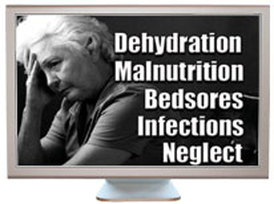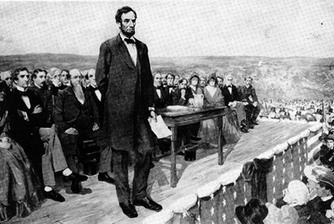Language and the Effects on the Reader

“Levels of language also refers to the writer’s style and to the connotations of the words chosen” (Spears 194). Everyone has different writing styles, it is either formal or informal, it all depends on who your audience is. “When examining a passage for denotative and connotative words, look first at the major words: nouns, verbs, adjectives, and adverbs”. (Spears 195). Typically the first few sentences helps your understanding of the whole passage. Denotative and connotative words are difficult to understand but knowing how to identify them is helpful. Poetry can be difficult to understand but after reading chapter 6 on figurative language you come away with a better idea of how to interrupt poems. For example, I know what metaphors, similes, and personification is and can tell the difference between the three. “To analyze a metaphor, you need first to identify the literal subject...” (Spears 197). then you need to look deeper into finding what the subject is and gain a better understanding of it before trying to summarize the whole passage or poem.
An example of language elements would be allusions. The purpose is to be able to identify the literal meaning but on a deeper connotative level (Spears 266). “An allusion is a pointed and meaning reference to something outside the text, which helps illuminates the subject” (Spears 266). For example, after alluding to ask.com you can gain a better understanding outside of the context. I have often read articles and editorials not realizing or recognizing the different writing languages but after studying this unit I now have a better grasp on how to interrupt the different styles.
Data/Graphs

DATA #1
"Graphs and charts present data in a succinct and a readable format... The chart and graph format allows the reader to see the relationships and trends over a period of months or years, depending on the underlining idea of the article" (Spears 96). Data and graphs are visual images trying to portray a point by using as few words as possible. The positive side of data and graphs is to see relationships and trends in a visual display. The negative side is they are not always a 100% accurate. The author uses words like relationships and trends to convey a specific meaning but they are not always valid. The difficulty of gathering data is the possibility of getting different results on the same topic.
You can get many things from reading just one passage. For example, there are facts, statistics, examples and illustrations, all of which help you understand the data. “As you recall from Chapter 3, a factis a piece of verifiable objective information: One can prove its truth by scientific measurement, by personal observation, by duplication, and so on”. (Spears 119). Facts are helpful when gathering information and putting research together. When you use facts and statistics it helps make your piece scientifically better. On page 131, there is a data chart that helps you answer many questions referring to that topic. Charts can be very useful in gathering information which makes it easier to understand information by visually seeing the results. Understanding the purpose of data/charts is important as far as being able to emphasize the information you have gathered. It is important to know the difference between facts and opinions but also important to have other examples of data to back up your piece. The author has shown many statistics and facts in her writings just to make her point better.
"Graphs and charts present data in a succinct and a readable format... The chart and graph format allows the reader to see the relationships and trends over a period of months or years, depending on the underlining idea of the article" (Spears 96). Data and graphs are visual images trying to portray a point by using as few words as possible. The positive side of data and graphs is to see relationships and trends in a visual display. The negative side is they are not always a 100% accurate. The author uses words like relationships and trends to convey a specific meaning but they are not always valid. The difficulty of gathering data is the possibility of getting different results on the same topic.
You can get many things from reading just one passage. For example, there are facts, statistics, examples and illustrations, all of which help you understand the data. “As you recall from Chapter 3, a factis a piece of verifiable objective information: One can prove its truth by scientific measurement, by personal observation, by duplication, and so on”. (Spears 119). Facts are helpful when gathering information and putting research together. When you use facts and statistics it helps make your piece scientifically better. On page 131, there is a data chart that helps you answer many questions referring to that topic. Charts can be very useful in gathering information which makes it easier to understand information by visually seeing the results. Understanding the purpose of data/charts is important as far as being able to emphasize the information you have gathered. It is important to know the difference between facts and opinions but also important to have other examples of data to back up your piece. The author has shown many statistics and facts in her writings just to make her point better.
Editorials

#5 Editorials
Editorials have many different types of writing styles many of them are filled with multiple fallacies. The vast majority of editorials are on political issues. One style might be the Either-Or fallacy which discusses an issue as if there are only two alternatives available (Spears 363). An example of this would be " A bumper sticker spotted in South Dakota: There are Americans. And then there are liberals" (Spears 363).
Editorials tend to analyze arguments with unstated assumptions. "An assumption is a seemingly self-evident belief underlying the argument" (Spears 306) I found this very interesting because it is very common in writing and also in our everyday speaking. It is something that I use daily but did not even realize it. It never crossed my mind when reading a passage that can be assuming certain things will happen or will not happen just based on what the author is saying. An example of this would be, let's go see the movie Crazy Stupid Love this weekend. I'm assuming several things here: we will both be alive, the movie will be playing, and the theatre will be open over the weekend. People are going to assume different outcomes from the same story because it is their own belief. I find it interesting and will pay more attention when I am reading a passage on what I assume is or is not happening.
The appeals in the arguments section discusses the different approaches of an argument. For example one of them is referred to as the Bandwagon appeal. “The bandwagon appeal rests on the assumption that everyone likes to be on the winning side or to do what everyone else is doing. It’s an appeal to popularity” (Spears 354). An example of this would be "Everyone knows that blondes have more fun. That's why you should use Preference by L'Oreal" (Spears 354). In editorials the author chooses a side, and wants others to choose the same side. It is common to see articles using a positive statement like this one.
Editorials have many different types of writing styles many of them are filled with multiple fallacies. The vast majority of editorials are on political issues. One style might be the Either-Or fallacy which discusses an issue as if there are only two alternatives available (Spears 363). An example of this would be " A bumper sticker spotted in South Dakota: There are Americans. And then there are liberals" (Spears 363).
Editorials tend to analyze arguments with unstated assumptions. "An assumption is a seemingly self-evident belief underlying the argument" (Spears 306) I found this very interesting because it is very common in writing and also in our everyday speaking. It is something that I use daily but did not even realize it. It never crossed my mind when reading a passage that can be assuming certain things will happen or will not happen just based on what the author is saying. An example of this would be, let's go see the movie Crazy Stupid Love this weekend. I'm assuming several things here: we will both be alive, the movie will be playing, and the theatre will be open over the weekend. People are going to assume different outcomes from the same story because it is their own belief. I find it interesting and will pay more attention when I am reading a passage on what I assume is or is not happening.
The appeals in the arguments section discusses the different approaches of an argument. For example one of them is referred to as the Bandwagon appeal. “The bandwagon appeal rests on the assumption that everyone likes to be on the winning side or to do what everyone else is doing. It’s an appeal to popularity” (Spears 354). An example of this would be "Everyone knows that blondes have more fun. That's why you should use Preference by L'Oreal" (Spears 354). In editorials the author chooses a side, and wants others to choose the same side. It is common to see articles using a positive statement like this one.
Editorial Article: Post on Reading Cafe as well
.http://www.kentucky.com/2010/12/30/1582636/state-responding-to-nursing-home.html>.
Public Advertisement

#4 Public Advertisements
Advertisements can easily confuse us and make us believe a certain product will make our life better and encourage us to spend our money on that product. “The advertiser uses flattery and transfer and a questionable cause-effect relationship to entice the consumer to accept an implied claim: If you use this product, you will miraculously be endowed with the same appeal that the model enjoys” (Spears 390). We can be easily manipulated that the product would magically work no matter what the situation is. Advertisements want us to be emotionally attached to the product by the appeal of it, so we would spend money to get the product. They tend to use logical fallacies to appeal to our natural desires to want to better ourselves, such as increasing our lifespan. For example the billboard on page 395 suggests that if we drink the pomegranate juice with the antioxidants power we will be around for 5,000 years just like the pomegranate has. Everybody knows we won't live for 5,000 years but the hope is they will still purchase this drink on the assumption that they will live a healthier and longer life.
Different types of appeals used in advertising are fear, patriotism and sometimes pity or sympathy. An example of this might be an ad in Parents magazine on Angel Alert, a tracking device used to aid parents in keeping their children safe (Spears 350). Should we trust a device to help keep our children safe simply because a billboard or ad in a magazine gives us an unwarranted feeling of security?
Advertisements can easily confuse us and make us believe a certain product will make our life better and encourage us to spend our money on that product. “The advertiser uses flattery and transfer and a questionable cause-effect relationship to entice the consumer to accept an implied claim: If you use this product, you will miraculously be endowed with the same appeal that the model enjoys” (Spears 390). We can be easily manipulated that the product would magically work no matter what the situation is. Advertisements want us to be emotionally attached to the product by the appeal of it, so we would spend money to get the product. They tend to use logical fallacies to appeal to our natural desires to want to better ourselves, such as increasing our lifespan. For example the billboard on page 395 suggests that if we drink the pomegranate juice with the antioxidants power we will be around for 5,000 years just like the pomegranate has. Everybody knows we won't live for 5,000 years but the hope is they will still purchase this drink on the assumption that they will live a healthier and longer life.
Different types of appeals used in advertising are fear, patriotism and sometimes pity or sympathy. An example of this might be an ad in Parents magazine on Angel Alert, a tracking device used to aid parents in keeping their children safe (Spears 350). Should we trust a device to help keep our children safe simply because a billboard or ad in a magazine gives us an unwarranted feeling of security?
Advertisement on Nursing Homes

This is an advertisement for a nursing home. The nursing home looks beautiful and they say they give quality care but who actually knows that for sure. There is not any proof or evidence of that unless I go myself and observe that nursing home. I would definitely recommend going to a nursing home and observing the care for a day before actually putting a relative in the facility. This advertisement makes you want put your elderly in this home, but just because they claim they give good care and it comes from the heart, does not mean it is true. Even the picture shows a modern facility; looks can be deceiving and you may not find the truth out until you see it for yourself.
Photograph

“Like graphs and charts, photographs present information- the content of the image- but they also convey a sense of character or place and often evoke an emotional response in the viewer” (Spears 323). Another thing about photographs is you see the emotion in it and you can sense how the person portrayed in the photograph feels. In this picture I get the feeling that this woman is overwhelmed with her circumstances and feeling hopeless. Using photographs helps us become better readers by making us think and feel what the person in the photograph is feeling without any description. Being a critical reader is all about comprehending and feeling what the author is trying to portray whether it is by photos, cartoons or data graphs. It is also important to know who the author is and why they chose to write the article or take the photograph. Knowing more on the author and their background, you tend to get a better feel of why they took the picture. The more information you have the better your analysis will be. Inferences is crucial when looking at photographs. "The crucial element in learning to make accurate inferences is to consider carefully the writer's intent- what he or she surely suggest but does not say directly" (Spears 81). When looking at photographs, knowing the inference helps in understanding the meaning behind the picture.
Cartoon

Cartoon #2
“Cartoons, especially political cartoons, often require one to make inferences”. A cartoon strips a situation down to its essential elements, and the careful reader must piece these elements together to make connections, especially if the cartoon doesn’t include a caption” (Spears 95). Using cartoons helps you analyze what the point is without reading a whole long article; it does so with few or no words at all. Understanding cartoons helps us become better critical readers by causing us to look deeper into the intended message.
If the cartoon is politically based the reader usually knows at least who it is referring to and an idea of what the topic is about just by the illustrations alone.
This cartoon I found is realistic on how most nursing home patients feel. They do not like how their life has become and wish they could go back in there younger days. I found that this cartoon was helpful in understanding that elderly patients usually want to reflect on those times simply because they were much happier then.
This particular cartoon also made me want to enjoy the place in life I am at right now because you ca not go back and re-live days gone by. It just shows how important it is to make every day count.
“Cartoons, especially political cartoons, often require one to make inferences”. A cartoon strips a situation down to its essential elements, and the careful reader must piece these elements together to make connections, especially if the cartoon doesn’t include a caption” (Spears 95). Using cartoons helps you analyze what the point is without reading a whole long article; it does so with few or no words at all. Understanding cartoons helps us become better critical readers by causing us to look deeper into the intended message.
If the cartoon is politically based the reader usually knows at least who it is referring to and an idea of what the topic is about just by the illustrations alone.
This cartoon I found is realistic on how most nursing home patients feel. They do not like how their life has become and wish they could go back in there younger days. I found that this cartoon was helpful in understanding that elderly patients usually want to reflect on those times simply because they were much happier then.
This particular cartoon also made me want to enjoy the place in life I am at right now because you ca not go back and re-live days gone by. It just shows how important it is to make every day count.
Lou Gehrig’s Farewell to Baseball

After Lou Gehrig speech he became ill and had to retire from baseball. He had thousands of fans come and support him on his last day as a baseball player. Lou's speech was definitely moving and the audience was interested in hearing what his heart had to say. I do not believe the audience expected him to say he was the luckiest man alive after finding out he would be dying from this illness. The audience was very supportive of his speech and found it moving and honorable. I believe Lou did an amazing job speaking to the fans all while holding back painful tears.
Lou Gehrig's purpose was not to bring attention to himself or make people feel sorry for him but to make people live their life as if it were their last. Lou lived life as best as he knew how and by living a good life on and off the field. Lou brought the audience in by talking about how much he had impacted millions of lives throughout his career and by his example. He set a great example to the world not just by being a good athlete but also by being an even better person outside of the field. Lou's emotion made the speech even better because you could feel the heart and passion he had for all the fans that have been there throughout his career and life.
Lou's heartfelt emotion made the speech famous. He did use repetition in saying he had a tough break but it isn't going to stop him from living his life to the fullest and as best as he can. Also, I think that gives people motivation and courage to be the best person they can be. Lou Gehrig told thousands of people that sports are not everything and that being a good person outside of sports is really what is important in life.
Lou Gehrig's purpose was not to bring attention to himself or make people feel sorry for him but to make people live their life as if it were their last. Lou lived life as best as he knew how and by living a good life on and off the field. Lou brought the audience in by talking about how much he had impacted millions of lives throughout his career and by his example. He set a great example to the world not just by being a good athlete but also by being an even better person outside of the field. Lou's emotion made the speech even better because you could feel the heart and passion he had for all the fans that have been there throughout his career and life.
Lou's heartfelt emotion made the speech famous. He did use repetition in saying he had a tough break but it isn't going to stop him from living his life to the fullest and as best as he can. Also, I think that gives people motivation and courage to be the best person they can be. Lou Gehrig told thousands of people that sports are not everything and that being a good person outside of sports is really what is important in life.
Martin Luther King Jr. Speech

Martin Luther King Jr.'s speech was amazing and the audience definitely loved what Martin Luther King Jr. had to say about freedom. The audience excitement made the speech that much better, they loved what he said about having the same rights as everyone else. During the 1960's civil rights were not handed to you. It was a tough time especially if you were African American. The audience needed to hear that they deserved rights as much as everyone else and that they were not alone. The audience was supportive of Martin Luther King Jr., they loved what he had to say. Just by their screams you could tell they agreed with everything he had to say. Martin Luther King Jr. voice during the speech changed when the audience cheered, he got excited just as the audience did.
From the beginning Martin Luther King Jr. expressed with excitement that freedom is for everyone and it does not matter what you looked like, it is all the same. He expressed that the purpose of the speech was not to say that African American's are bette but that everyone deserves the same rights and America was created equal. The emotion during the speech was seen through the audience and the audience expressed that they felt the same as what he was preaching. Freedom is for everyone!
He used repetition during the speech many times. He was trying to make a point that freedom and rights are for every single person in American. He definitely made his point clear, and from that point forward, America was changed.
From the beginning Martin Luther King Jr. expressed with excitement that freedom is for everyone and it does not matter what you looked like, it is all the same. He expressed that the purpose of the speech was not to say that African American's are bette but that everyone deserves the same rights and America was created equal. The emotion during the speech was seen through the audience and the audience expressed that they felt the same as what he was preaching. Freedom is for everyone!
He used repetition during the speech many times. He was trying to make a point that freedom and rights are for every single person in American. He definitely made his point clear, and from that point forward, America was changed.
Gettysburg Address

The audience from this time period was just beginning a new history. The government was just beginning and the founding fathers was setting the government in place. It was all new to the people. The speaker was telling the audience that the whole idea of the constitution is to bring people together and everyone to be counted equal. I could not hear the audience specifically but I am sure they were not completely sure of how things were going to turn out but trusted the change. The speaker was trying to stay positive but also wanted to explain what was happening during this time.
Abraham Lincoln was informing the audience that during the time of war, the country still needed to stick together. His emotion during the speech was to help bring the American people together. He was clear that he was putting all of his energy into that one purpose. I am sure the audience was motivated and wanted things to be the same even if we are at war. The speaker wanted what the founding fathers wanted, to still exist even during war. His emotion brought a lot to the audience.
Lincoln talks about the war many times to convey the point that just because there is war, it does not mean you can't stick together as a country. If the people do not stick together the country will end up not doing well. He made his point very clear and wanted us as Americans to understand that to be a country meant acting as a country and working together.
Abraham Lincoln was informing the audience that during the time of war, the country still needed to stick together. His emotion during the speech was to help bring the American people together. He was clear that he was putting all of his energy into that one purpose. I am sure the audience was motivated and wanted things to be the same even if we are at war. The speaker wanted what the founding fathers wanted, to still exist even during war. His emotion brought a lot to the audience.
Lincoln talks about the war many times to convey the point that just because there is war, it does not mean you can't stick together as a country. If the people do not stick together the country will end up not doing well. He made his point very clear and wanted us as Americans to understand that to be a country meant acting as a country and working together.

